by Donna Klein
How Aniline Dyes Changed Fashion
Thank a Scientist for Aniline
Aniline was first isolated from indigo in 1826 by Otto Unverdorben. It was given its name in 1840 by Julius Fritzsche when he distilled indigo into an oil using caustic potash. But, it was a long way from being used as the basis of dyes in textiles.
By the1850s, British colonization in Africa was threatened by malaria. Quinine, made from the bark of the cinchona tree, was the only effective treatment. But, because the trees were from South America, it was not a viable option, especially with the immediacy of the problem. Scientists tried to find a way to synthesize the drug in the laboratory.
Science was looking at coal tar, an industrial waste product, as a possible source of synthesized quinine. Wilhelm von Hofmann from the Royal College of Chemistry was sure it could be turned into something useful, so he enlisted the help of his students to help him experiment with it. Knowing the properties of coal tar contained amine, a component also found in quinine, he enlisted the help of William Perkin, a promising 18-year-old student.
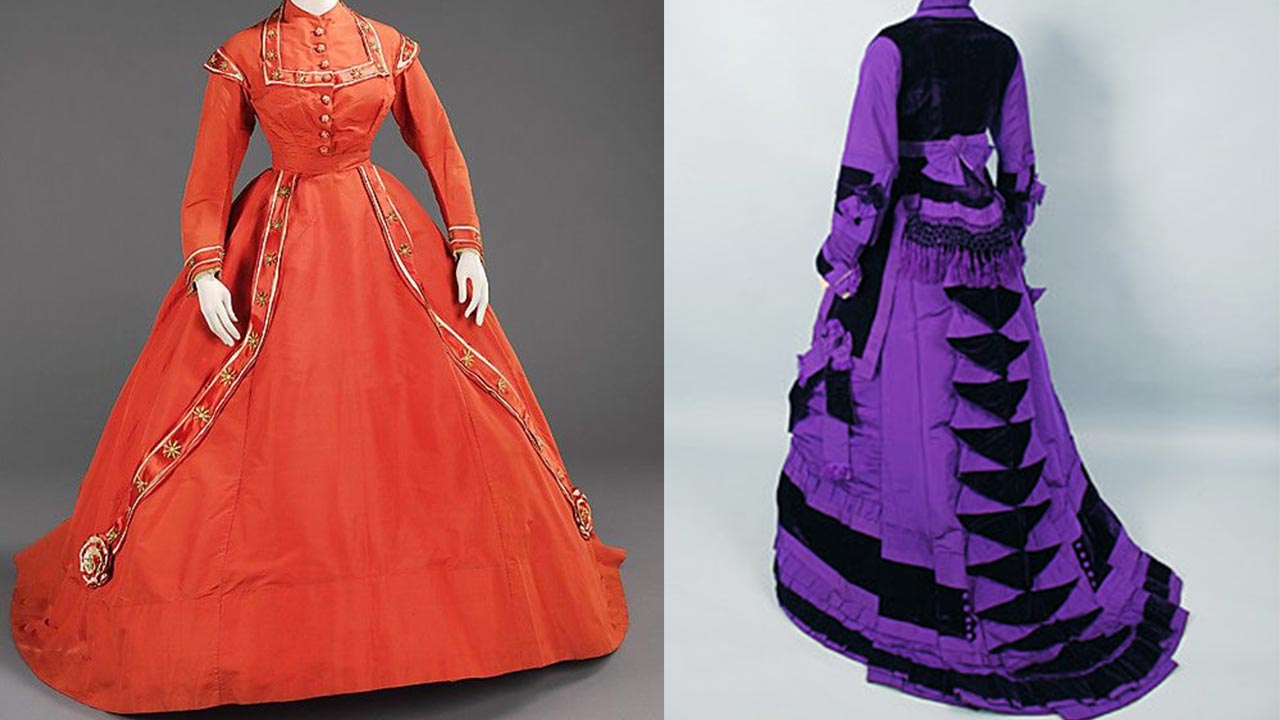
One experiment, using aniline, led a failure in synthesizing quinine, but left a bright gunky black residue on the glass. When he washed it out, the residue turned bright purple. He treated the residue with alcohol and found that the color transferred evenly to the cotton cloth used to wipe it out. The discovery was ironic in that he had been experimenting and failing to find a synthetic alternative to natural colorants for fabrics. He knew that the first person to successfully use artificial dyes could find himself a very wealthy man. He knew at once that he failed medicine, but might be on the verge of changing textiles, and therefore, fashion, forever.
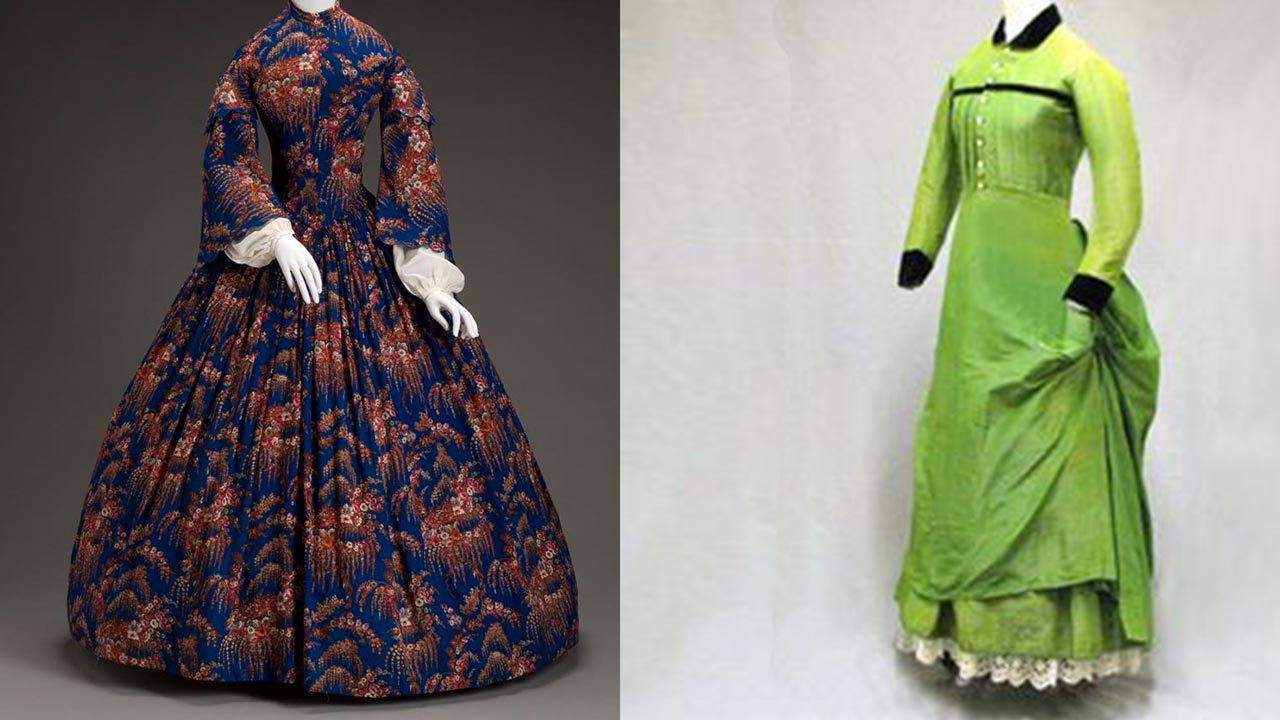
Within six months the process was patented and he was on his way. He left the Royal College of Chemistry and, with the help of his brother, manufactured his first dye, Tyrian purple (mauveine). Mauve, as the French referred to the hue, was very popular amongst the wealthy of London and Paris during 1857 and 1858, and a favorite of both Empress Eugénie of France and Queen Victoria. Perkin’s dye was brighter and cheaper than those available at the time, making the color accessible in affordable fabrics for the first time ever! Fuchsine, safranine, and induline soon followed, allowing for bright, vibrant textile colors.
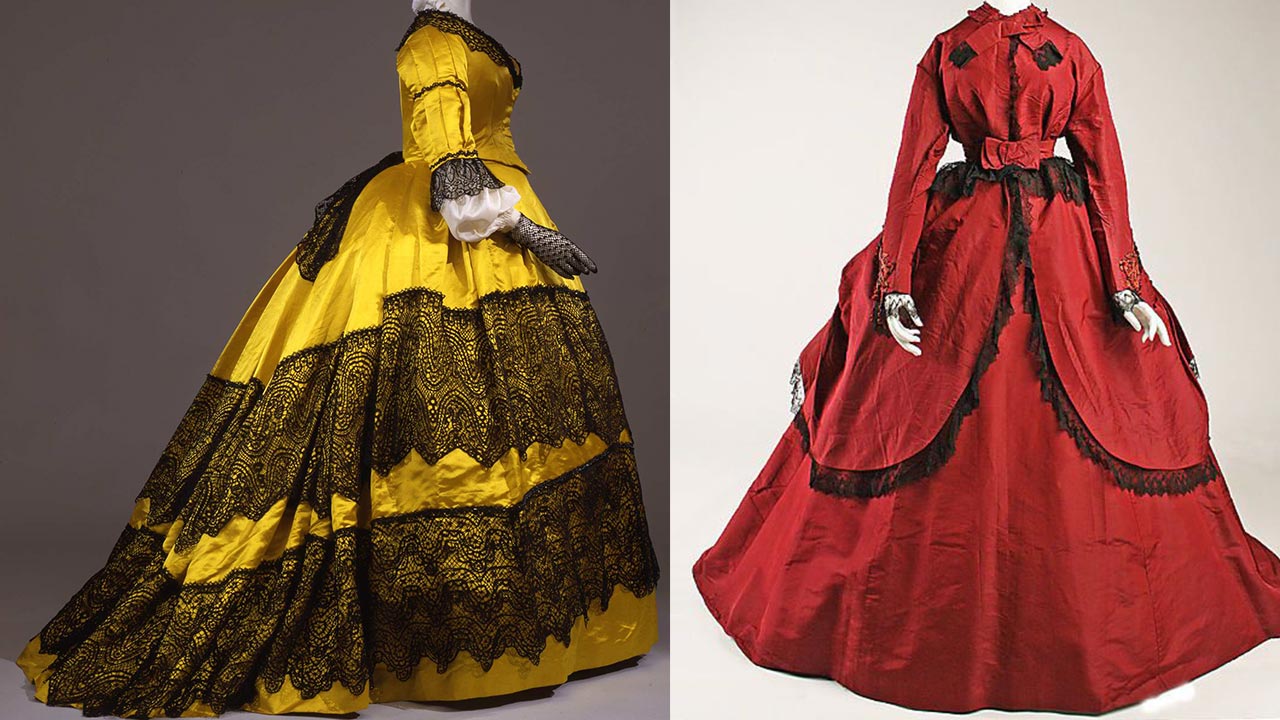
More Information and Credits
http://www.victorianweb.org/science/perkin.html
http://www.toxipedia.org/display/toxipedia/Aniline
Aniline Dress Photos
Galleria del Costume di Palazzo Pitti

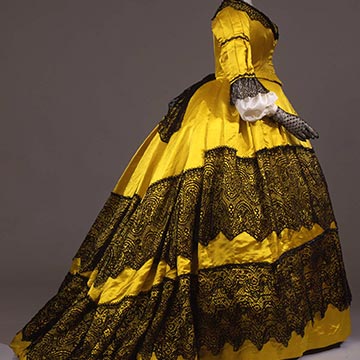


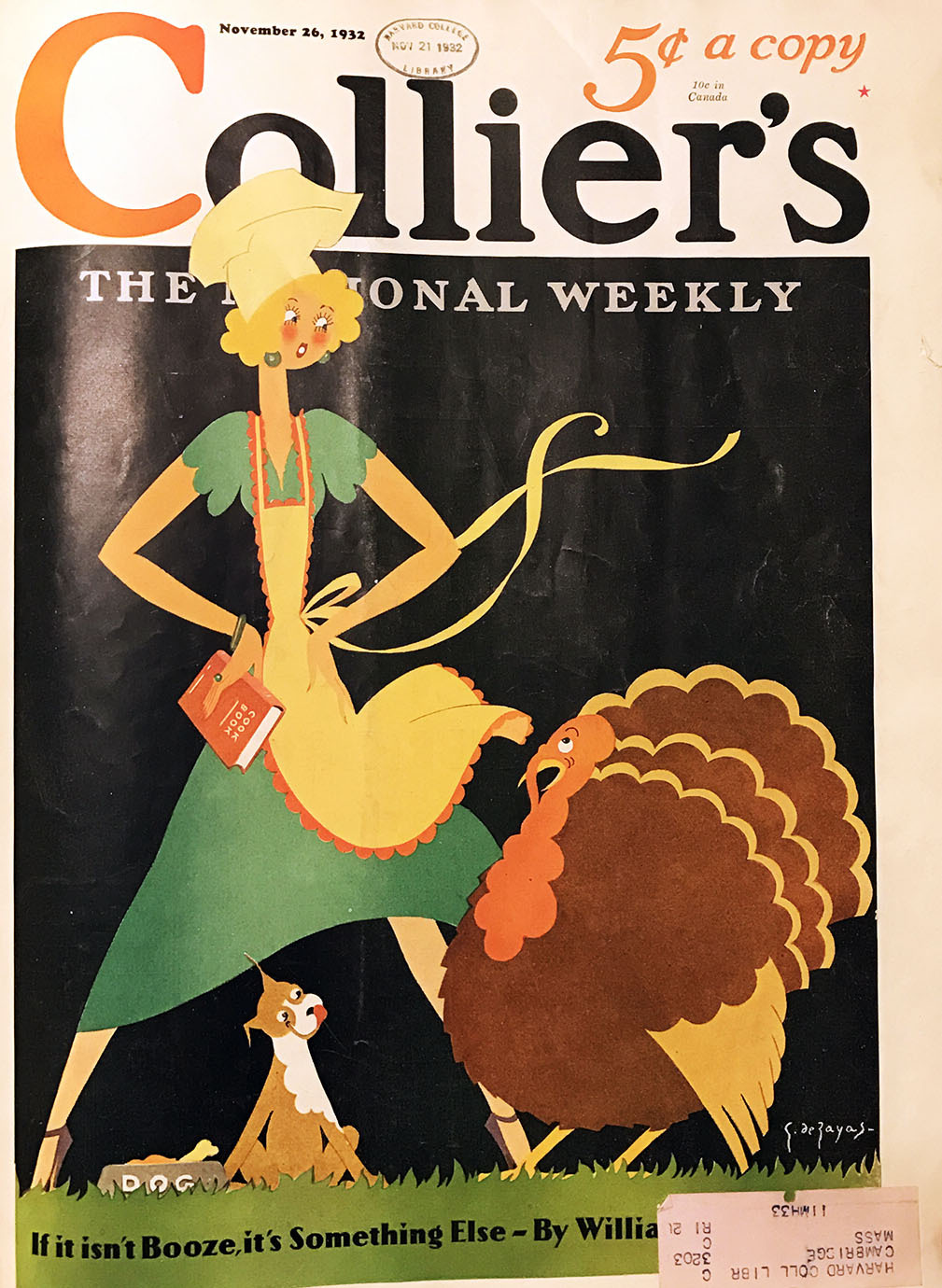
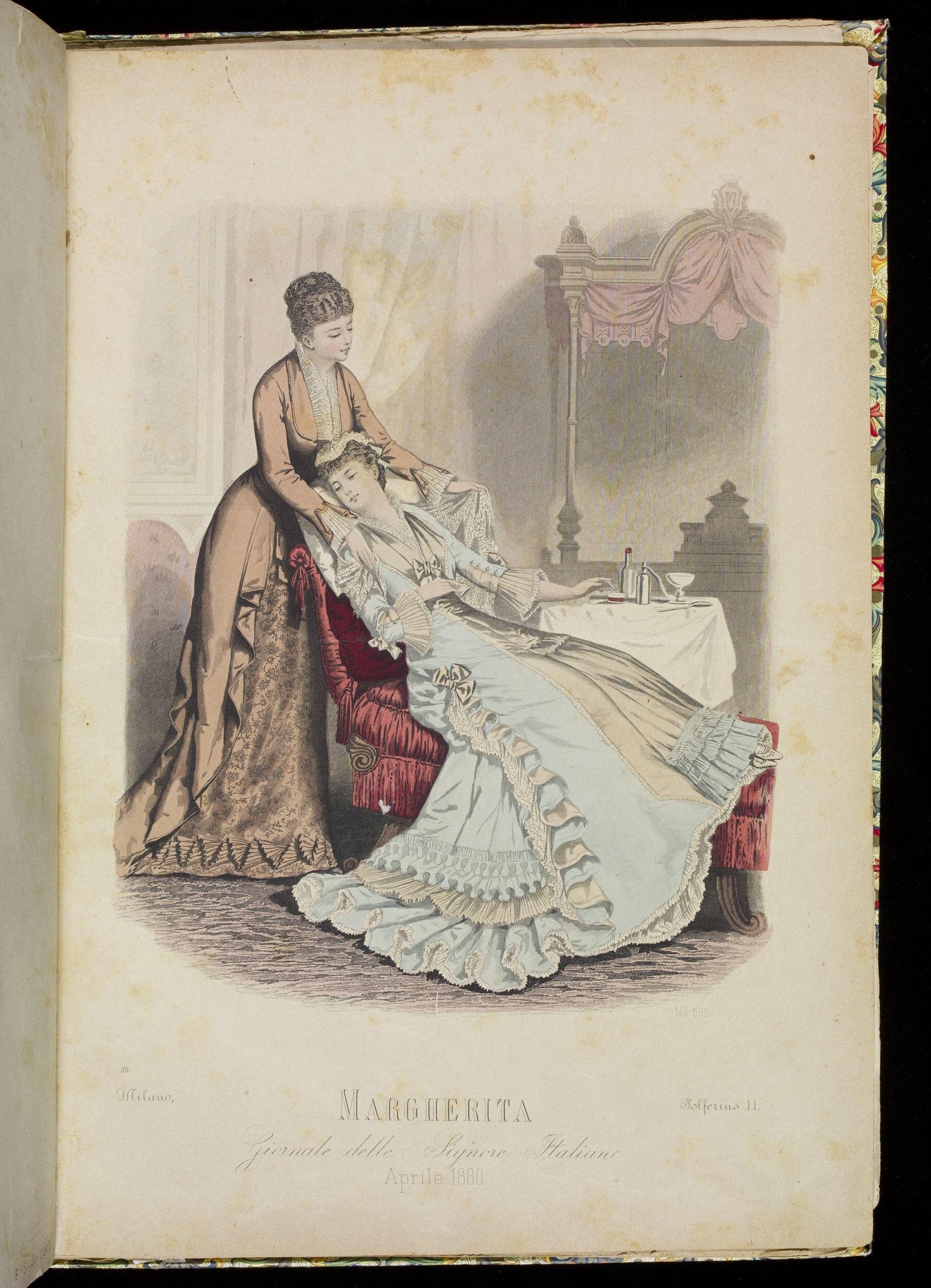
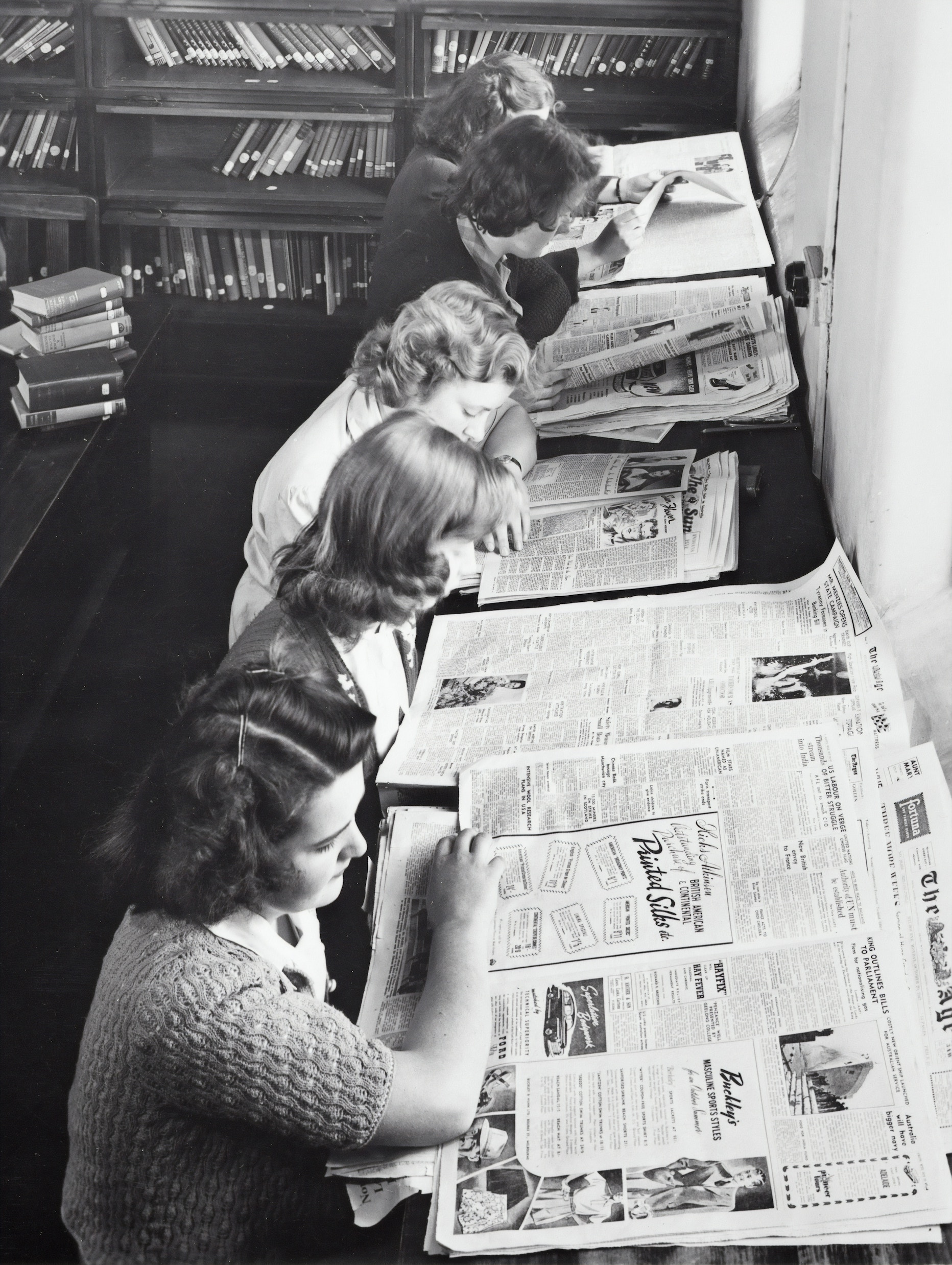

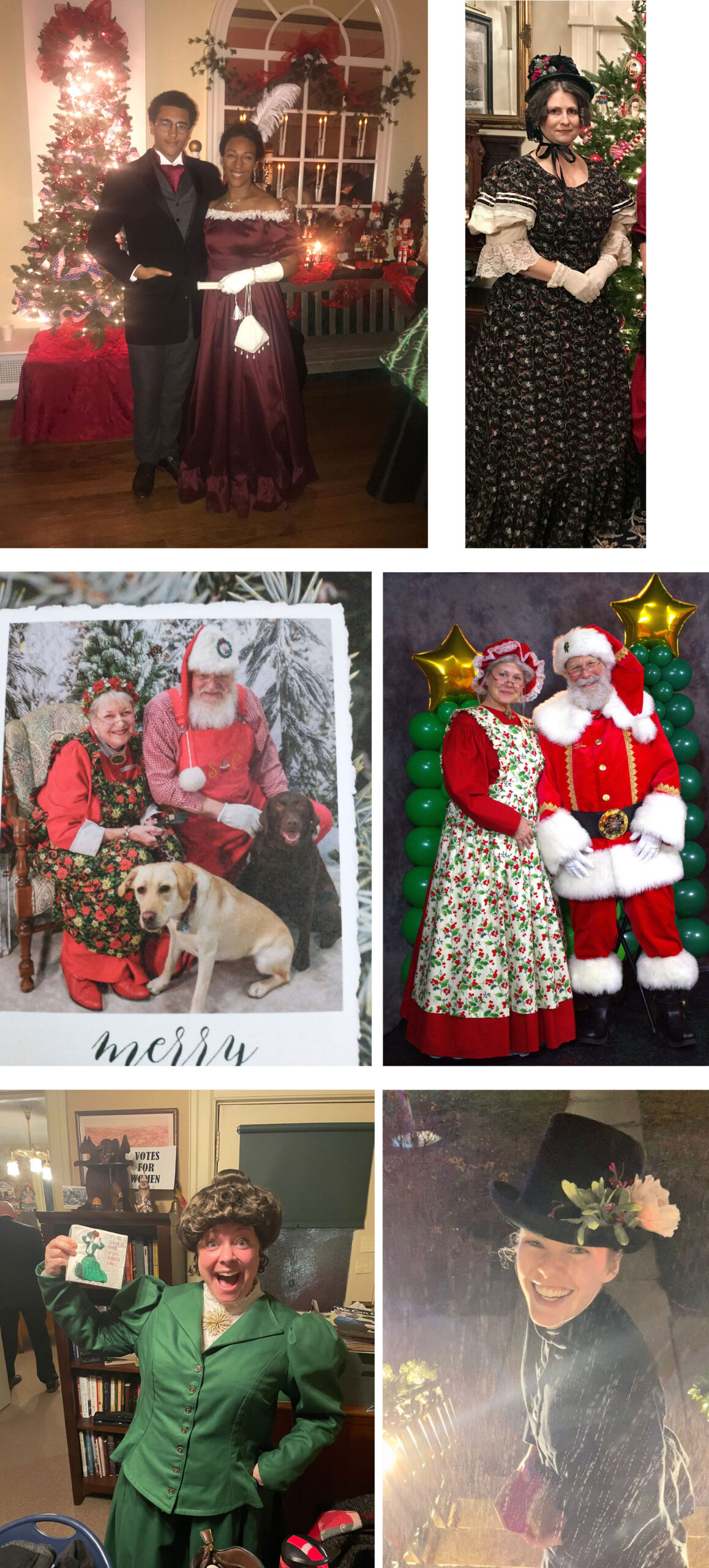
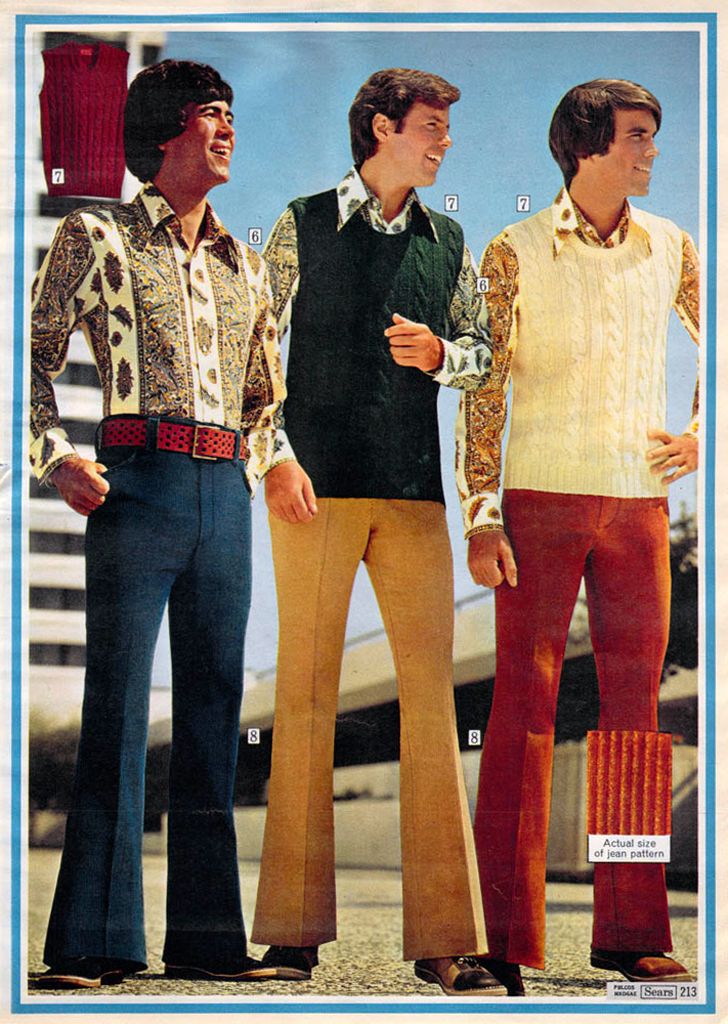
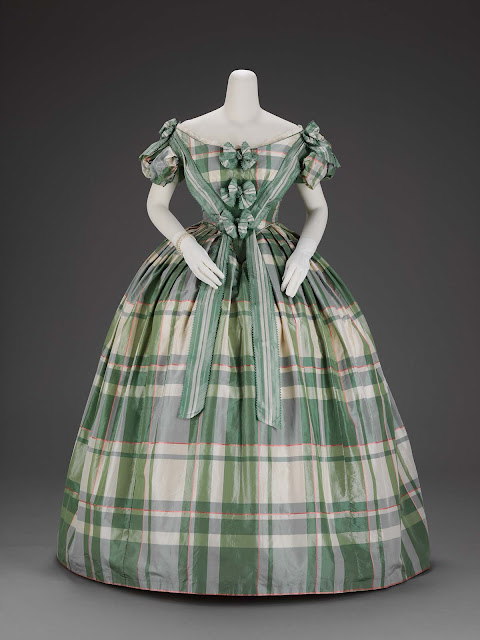
Leave A Comment